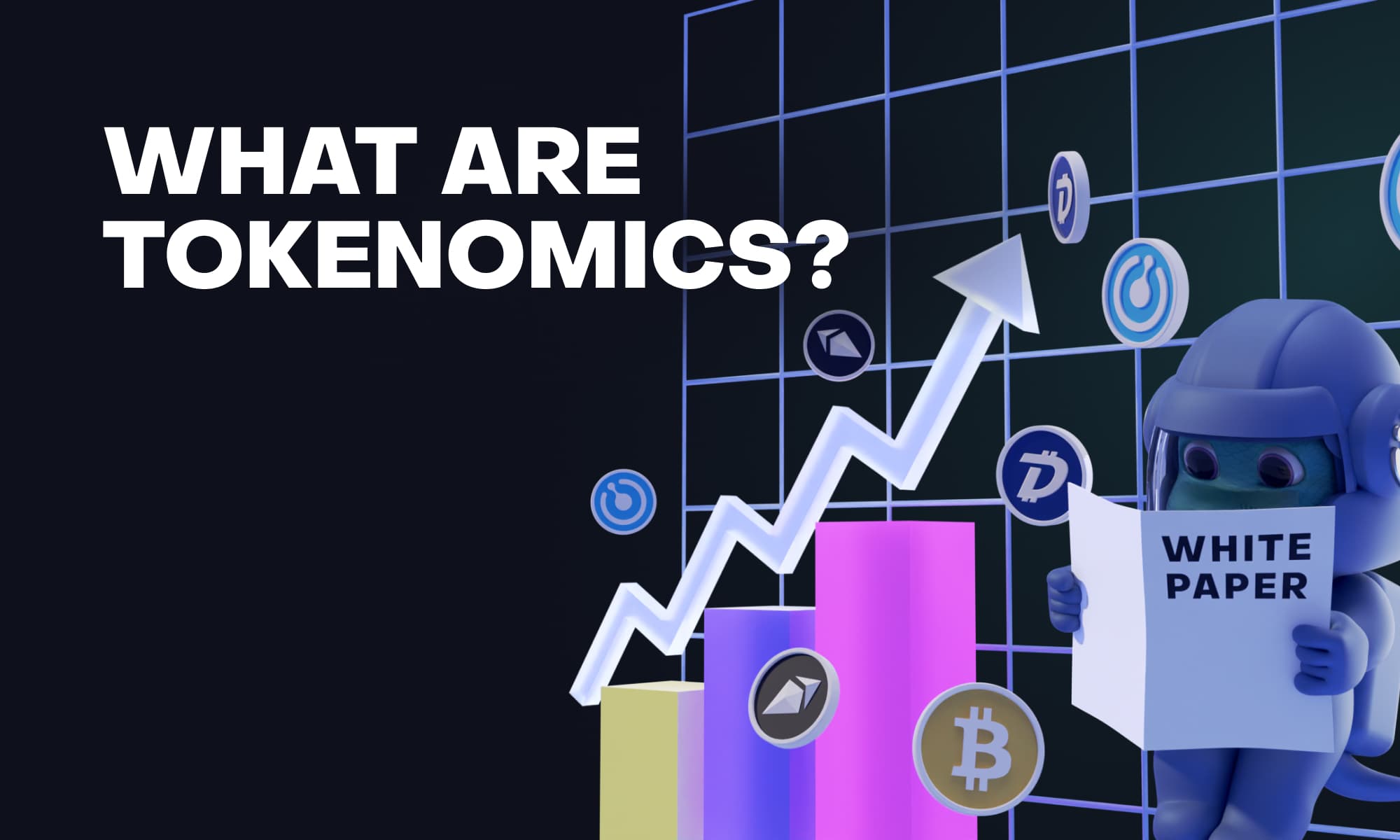
Table of contents
Tokenomics is the study or focus relating to token economies, including all elements connected to the creation, administration, and possible removal of tokens from a network.
There are thousands of crypto assets currently in circulation across multiple blockchain networks. Although some of these projects have been successful and amassed thriving communities, many others were short-lived or are on the decline. These unsuccessful blockchain projects have resulted in a loss of funds and value for many crypto enthusiasts.
People should always consider it necessary to understand project details before participation. To help explain these details, new projects publish documentation with specific metrics that describe their native crypto assets. Known as tokenomics, a shortened version of 'token ecomomics', crypto projects use these explanations to help interested parties understand their assets and how they fundamentally operate.
What Is a Token?
Cryptocurrency tokens are digital assets created through smart contract deployments on blockchain networks like Ethereum. These tokens can represent a variety of assets and can serve multiple functions within a project's ecosystem, such as granting access to certain perks or acting as a store of value. The two main categories of tokens are utility tokens and security tokens.
Utility tokens offer discounts, incentives, and other benefits or 'utilities' for holding tokens, especially within decentralized applications. Meanwhile, security tokens offer the holder a stake in the success of the decentralized application (dApp) or project, as the token's value is directly reflected by the project's performance. Regardless of token type, many networks work towards interoperability through cross-chain bridges, making different types of tokens usable across multiple blockchains.
A Breakdown of Tokenomics
Some of the key elements of a project's tokenomics include the following:
Token Supply
Crypto tokens have limited or unlimited total supplies, and are controlled by the smart contracts and validators governing their issuance. A token's supply significantly impacts the token price and market demand, as it affects both scarcity and perceived value.
An increase in Token supply can decrease token price, as a large number of tokens in circulation may dilute scarcity and perceived value. On the other hand, a decrease in supply can drive up the token price because it increases scarcity.
Token Utility
Token utility is the purpose or function of a token within the project's ecosystem or dApp. The token utility helps determine the value and plays a critical role in defining demand and price. The higher the token utility, the higher the potential demand for the token, and in most cases, the higher the price. For example, a token that provides access to premium services within a dApp may enjoy higher utility and demand than a token functioning exclusively as a form of payment.
Additionally, token utility can help increase the user base as enthusiasts may 'HODL' to take advantage of the asset's utility within the dApp and across the peer-to-peer crypto space. A token can incentivize users to participate in the ecosystem by offering valuable services, thereby increasing demand and value.
Analyzing Token Distribution
Token distribution describes how new tokens are allocated to different groups of users. In the initial token distribution phase, a project determines the number of tokens it intends to distribute or sell, and decides its intended receivers. A well-organized token launch is typically a public event, with only a limited number of new tokens going to founders and other insiders.
There are two main token distribution mechanisms, including:
Token Sales - Initial Exchange Offerings (IEOs) and Initial DEX Offerings (IDOs) are the most common types of token sales in the blockchain sector.
Internal Allocation - Projects allocate tokens to participants, such as team members, advisors, early partners, and backers, as incentives for their contributions.
Token Burns
Token burns refer to the permanent removal of tokens from circulation, which reduces the total token supply within the ecosystem. When supply decreases and demand is constant, there typically is a corresponding token price increase, as the supply is now more limited with the same amount of interested buyers.
Token burns sometimes serve as a mechanism for token issuers to increase the value of their tokens and reward holders. However, users must consider potential drawbacks, such as the potential for centralization and possible token supply manipulation.
Mining and Staking
Mining and staking are vital components that contribute to token distribution and network or application security. Mining involves generating new tokens using computational power while staking entails holding a certain amount to secure the network. Both processes ensure network security and help to distribute tokens among stakeholders.
By participating in either, users can earn rewards in the form of newly minted tokens, helping to promote a more equitable distribution of tokens. Various digital wallets, including hardware and crypto desktop wallets, offer features that help to track tokens and rewards.
Why Studying Token Economics Is Crucial in Crypto Investing
Understanding the different factors that contribute to a token's value, such as supply, distribution, and utility, is essential for users who want to make better and more informed decisions. A token with well-designed tokenomics has the potential for significant growth. Tokens with high utility are typically in higher demand and enjoy sustained price appreciation. For instance, Bitcoin dominance in the crypto market is a direct result of its early start, but also its utility as a store of value and a medium of exchange.
Benefits of Strong Tokenomics
Some advantages of buying into projects with strong tokenomics include the following:
Increased Token Utility: Tokens with strong tokenomics often have a defined purpose and function, which improves utility and demand.
Sustainable Token Value: The value these tokens carry is more stable and sustainable due to their well-designed models for supply, distribution, and utility.
Improved Market Demand: Strong tokenomics can help to create a strong community of users, leading to increased demand and higher prices.
Better Risk Management: Users enjoy better risk management since value and demand are more sustainable.
Risks Associated with Weak Tokenomics
Users who participate in projects with weak tokenomics may suffer the following risks:
Unsustainable Token Value: Weak tokenomics often leads to large price swings and unpredictable token values, making it more difficult for users to manage risk.
Poor Market Demand: Tokens with poor tokenomics often struggle to generate demand from users. This results in lower trading volumes and poor liquidity.
Ineffective Token Utility: Most tokens with weak tokenomics also have no clear purpose or function within the project's ecosystem. Without purpose, utility and demand are usually lower.
Token Economics in Evaluating the Worth of Cryptocurrencies
In the fast-paced and highly competitive cryptocurrency market, evaluating a token's worth requires a deep understanding of its token economics.
This requires learning about essential factors such as token supply, token utility, mining, staking, token distribution, and token burns, all of which can play a crucial role in determining a token's value and overall demand.
By analyzing these factors and considering the current market landscape, users can make informed decisions for the best chance of a profit.




